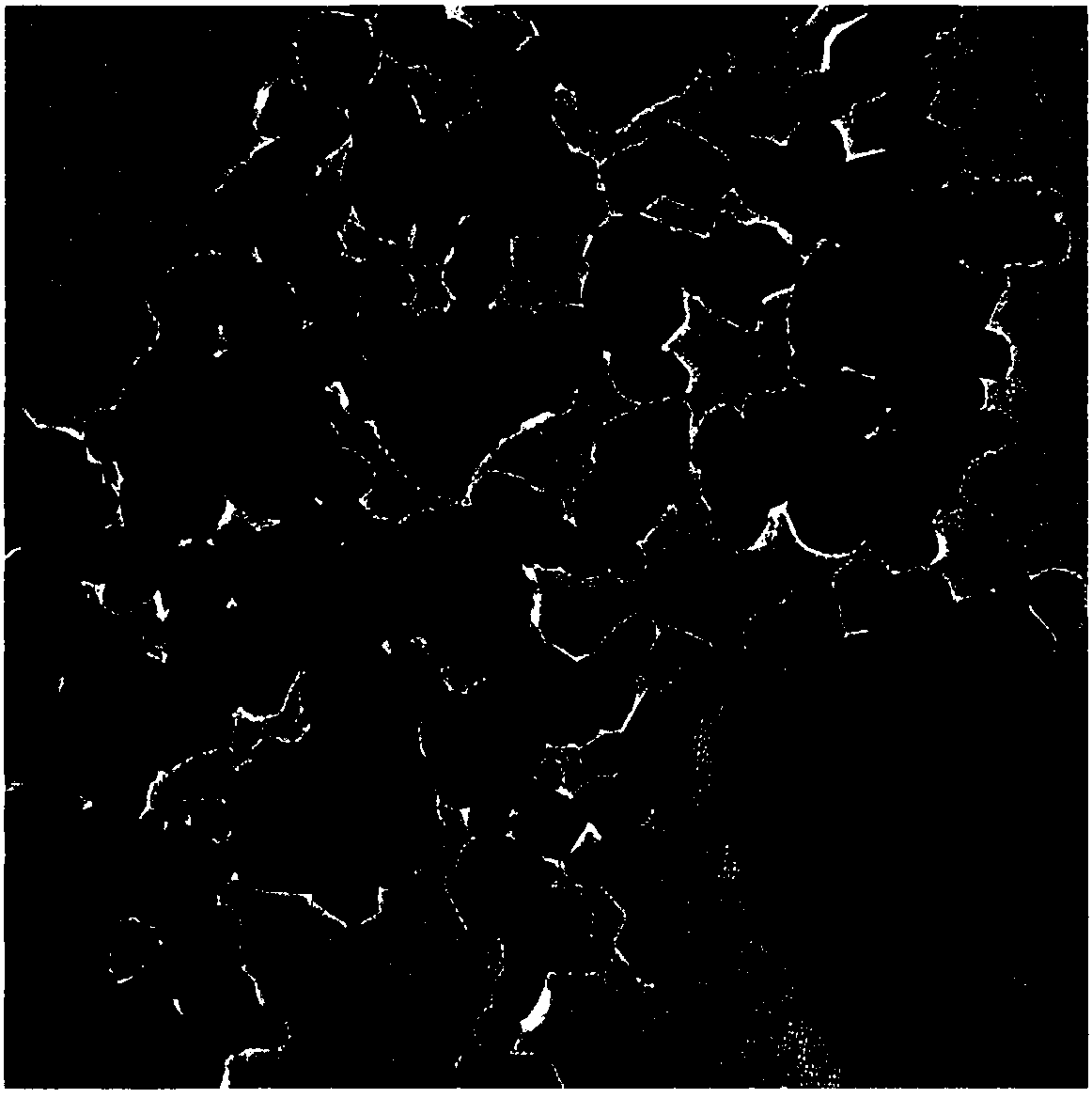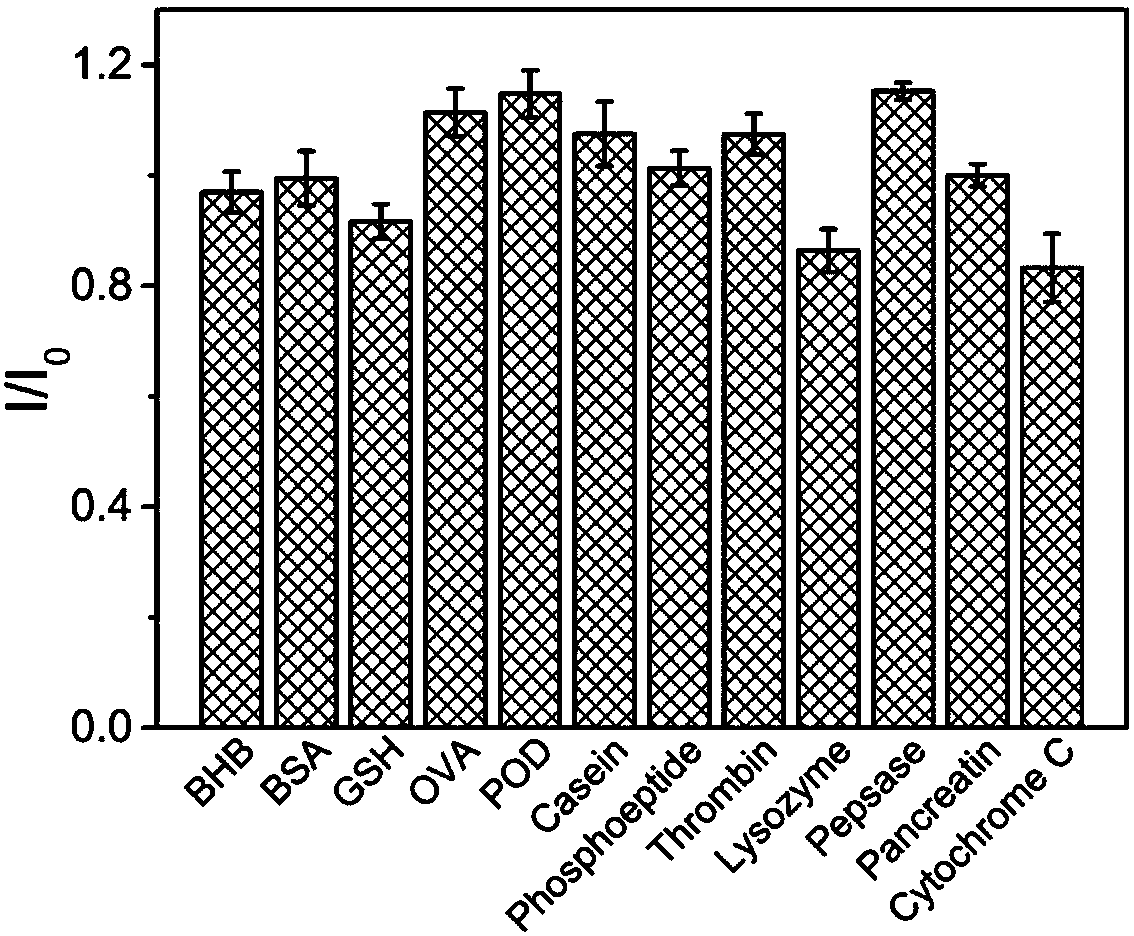Specific fluorescence labeling method of food-borne probiotics and in-vivo application thereof
A technology of fluorescent labeling and probiotics, applied in the research field of food-derived probiotics, can solve the problems of unstable luminous intensity, lack of optical stability, coherent light excitation, etc., and achieve excellent afterglow performance, good photochemical stability, and fluorescence long life effect
- Summary
- Abstract
- Description
- Claims
- Application Information
AI Technical Summary
Problems solved by technology
Method used
Image
Examples
Embodiment 1
[0041] A specific fluorescent labeling method for food-borne probiotics
[0042] (1) Preparation of Cr with near-infrared fluorescence and ultra-long afterglow properties by solvothermal-high-temperature calcination method 3+
[0043] Doped zinc gallogenate long-lasting fluorescent nanoprobes.
[0044] Accurately weigh 0.013mmol Cr(NO 3 ) 3 9H 2 O and 3.01mmol Zn(NO 3 ) 2 ·6H 2 O is uniformly dissolved in 0.6mol L prepared in 10mL -1 Ga(NO 3 ) 3 Stir magnetically in the solution to make it evenly mixed, adjust the pH to 7.5 with tert-butylamine for co-precipitation, continue magnetic stirring for 2 hours, and ultrasonically treat for 30 minutes to make it evenly mixed, and place the formed white emulsion in a polytetrafluoroethylene reaction kettle for 120 ℃ hydrothermal reaction for 24h. Take it out and let it cool down to room temperature naturally, add it to 2 times the volume of ethanol, mix evenly, produce a precipitate, centrifuge at 7000rpm for 10min to colle...
Embodiment 2
[0048] A method for specific fluorescent labeling of food-derived probiotics, the steps and method of which are basically the same as in Example 1, except that the probiotics are Bifidobacterium lactis V9, and correspondingly fluorescently labeled Bifidobacterium lactis V9 is obtained.
Embodiment 3
[0050] A specific fluorescent labeling method for food-derived probiotics, the steps and method are basically the same as those in Example 1, the difference is that the probiotics are Lactobacillus reuteri, and fluorescently labeled Lactobacillus reuteri is obtained accordingly.
PUM
| Property | Measurement | Unit |
|---|---|---|
| particle diameter | aaaaa | aaaaa |
| size | aaaaa | aaaaa |
Abstract
Description
Claims
Application Information
 Login to View More
Login to View More - R&D
- Intellectual Property
- Life Sciences
- Materials
- Tech Scout
- Unparalleled Data Quality
- Higher Quality Content
- 60% Fewer Hallucinations
Browse by: Latest US Patents, China's latest patents, Technical Efficacy Thesaurus, Application Domain, Technology Topic, Popular Technical Reports.
© 2025 PatSnap. All rights reserved.Legal|Privacy policy|Modern Slavery Act Transparency Statement|Sitemap|About US| Contact US: help@patsnap.com



